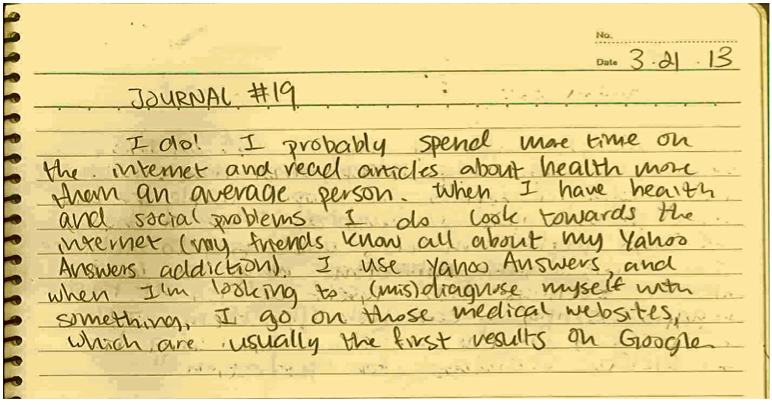Journaling has been a big part of my health classes since the day I became a teacher, and the benefits it has had on my teaching practice keep piling up every year. Even with all of the technological advances over the last 15 years, I start every semester by giving each of my students a small spiral bound notebook.
Here are 7 reasons why you should too.
- Gage student concerns and keep your content relevant
When I first became a health teacher, I was given the teacher’s guide to an outdated textbook and told to just “go in order and get through what you can”. When I thumbed through the first few chapters, it was clear I wasn’t going to cover the topics my students wanted and needed me to.
So I asked them what I should cover, by writing the following on the board,
“Journal #1: What are the biggest health concerns in our school community? In your family? For you personally?”
I spent that first afternoon looking through all of their journals, and built my curriculum from there.
- Enjoy one-on-one conversations with your students
When I was a sophomore, I had a Language Arts teacher who had us journal at the beginning of each class. I still remember some of her comments back to me, as it felt like she really was getting to know me as a person.
I used to collect journals twice a semester to spend time writing back to my students, but would end up overwhelmed by the sheer magnitude of it all. So for the past few years, I’ve used a staggered “journal check” schedule. Each student has five days during the course of the semester when they’re assigned to hand their journals in. This keeps them on top of their entries, and gives me about 12 journals a day to check, making it much more manageable.
- It gives students a healthy coping skill
Research shows that keeping a journal is good for our health– physically, mentally, emotionally, and socially. It helps us gain perspective and work out problems on our own. Getting students in the habit of writing down their thoughts and feelings is worth the time in and of itself.
- It’s a good place to write down gratitude lists
In a recent study, university students who took the time to write down five things they’re grateful for had a marked increase in their happiness levels. I have my students jot down a gratitude list in their journal during the first lesson of each week. It takes just a second, and as one of my 7th graders put it, “It’s like the fastest happiness hack ever.”
- Increased mindfulness and focus
My students spend the first five minutes of class every other day writing in their journals (three years ago we started alternating it with a guided meditation). If they have something pressing on their minds, they’re always free to write about that rather than the prompt I’ve given them. Having the chance to get their thoughts out on paper and out of their heads helps them focus and get ready for class.
This is especially useful when you teach 6th graders right after lunch.
- It’s a tool for formative assessment and reflection
My journal topics are always connected to our current projects or units of study, so with the staggered journal checks, I can really get a feel for what’s working, and what I need to spend more time on. I can also track individual student progress and get an idea of who needs help.
- It’s a great discussion starter
Not all kids are good at thinking off the cuff, so by giving them the chance to get their ideas on paper first, they’re more comfortable when it comes time for our class discussions. As for my introverts who have a hard time sharing at all, I get to check for understanding on journal check days.
Some of the strongest in class relationships I have are with students who rarely raise their hands. And that is the biggest reason for journaling of them all.

